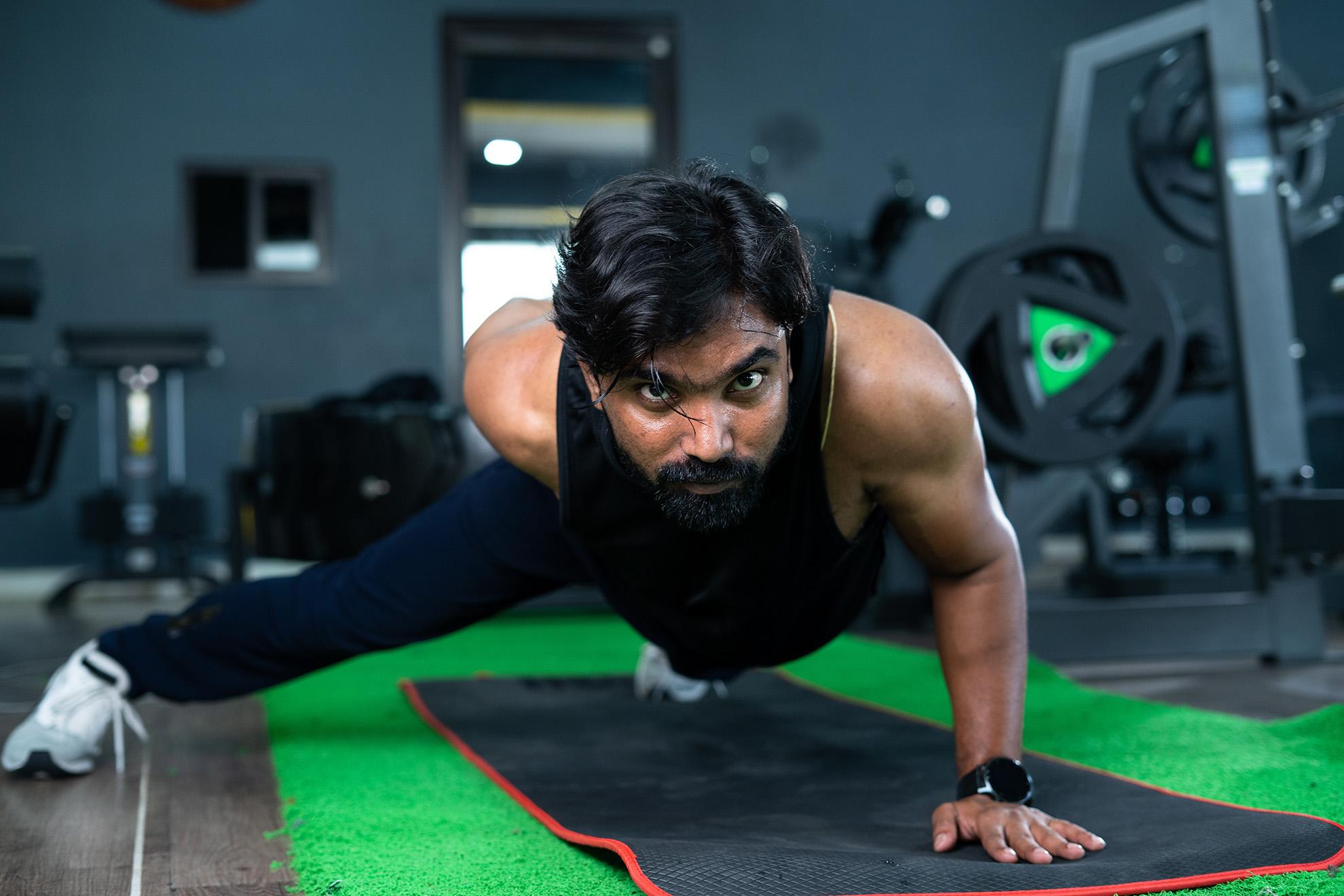In today’s health-conscious society, people who are interested in fitness have more drive than ever to workout. Gym owners, yoga studios, and fitness gurus have a great chance to capitalize on this rise in demand and bring in new consumers.
With an expected yearly growth rate of 6.05% from 2022–2029, the health and fitness industry in India is expected to reach $36.92 million by 2029. An impressive increase in demand, right? If you want to attract people who are eager to use your services and improve their health, now is the fitting time to create a fitness website.
Benefits of creating a fitness website
In the wake of booming and popular gym franchises like Cult Fit and Anytime Fitness in India, you need to sieve through the crowd and carve out a space for yourself online. In case you still need convincing, here are a few benefits why you should launch a fitness website right now.
1. Accessible 24/7
The ability to attract new members at any time of day or night is a major perk of fitness websites.
2. Reach a wider audience
No one would ever dream of limiting their company to just one location. You would want a lot of people to contact you whether you operate a little fitness studio or a large one. What a website can do is help reach out to a wider section of the audience, beyond geographical boundaries.
3. Gives credibility
When people find a variety of fitness studios and gyms nearby, they are more likely to use Google to compare which one is the best. Many will look up ratings for their shortlisted options to choose which one stands out as the best fit for them. In such cases, all eyes will be on your internet persona.
A website, especially one that ranks well on Google, provides fitness studios a leg up in the competition and attracts prospective customers.
4. Easier client enquiries and decision making
Advertising your services and providing potential customers with detailed information about your gym on your website makes it simpler for them to make a decision about whether to join your studio or not.
Step-by-Step guide to creating a fitness website
Make your own fitness website in no time at all by following these simple step-by-step guidelines:
Step 1: Pick a domain for your fitness website
Getting a domain name is the first step in creating a website. Your domain name is basically the first image your organization gives to potential consumers.
While you're thinking of a creative name for your website, stick to simple terms and avoid using hyphens. Choosing a name that is both memorable and relatable should be the first priority.
Think about what your website is all about when you choose a domain name. If you are someone who teaches yoga, consider "yogainspiration.in" as a possible domain name for your yoga-related website.
Think about TLDs such as .fit, .sport, .fitness, .club and more.
Editor's note: You should check the domain's accessibility before registering it. To find out whether a domain name is available, you can use GoDaddy to check for free. Just enter the desired domain name and search. To help website owners make better financial decisions, it may also display the costs of using different TLDs.
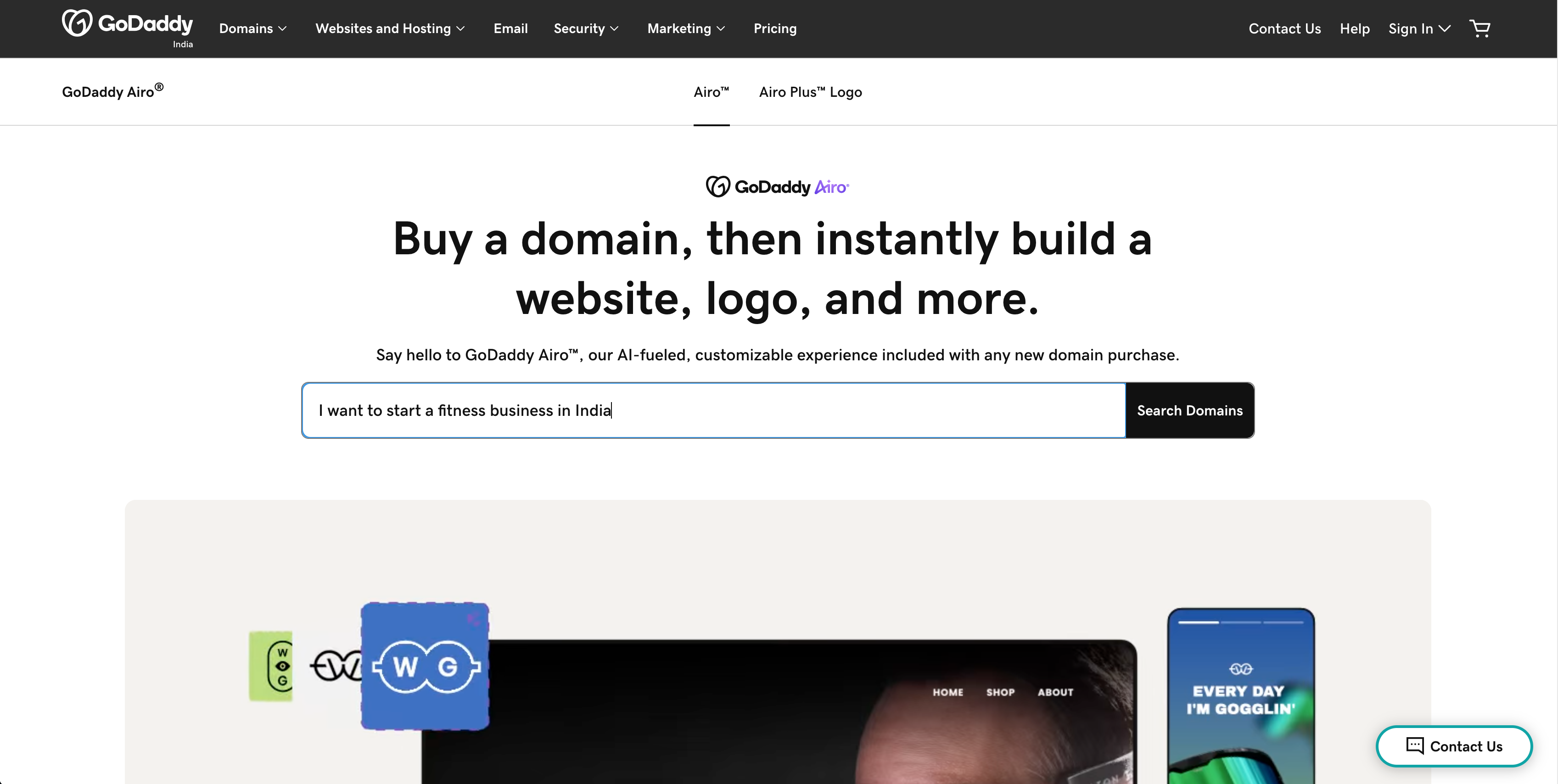
Related: Guide To Use .in Domain Name Extension For Your Business In India
Step 2: Select a web hosting plan
The web hosting industry is vast, so it's important to choose a provider with a solid reputation for site dependability as well as a range of plans to suit your specific requirements.
Factors to consider when selecting your web hosting provider
Your website's performance and general functionality may be greatly affected by a number of important criteria when choosing a web host. Before all else, consider these three crucial aspects:
Uptime
What exactly is uptime? How often your website is available to users is called its uptime. If your site goes down, you lose prospective customers and traffic. So, having a high uptime is very important. Having an uptime that is very near to 100% is ideal. Because even a single hour of downtime may have a major effect on your business.
Websites built with GoDaddy run the fastest on desktops, scoring 92.06%. For optimal performance, go with such a powerful web host for your fitness platform.
Loading Speed
Users get frustrated and are more likely to leave a website if it takes too long to load. Moreover, page load speed is now one of Google's ranking factors.
Search engines and users alike will appreciate faster page loads, so look for a web host that can achieve this goal.
Customer Service
When dealing with technological difficulties or requesting help, having a dependable customer care staff can be very crucial.
Always choose a web hosting plan that provides a variety of ways to get in touch with them, such as call, chat, email, and ticketing systems. What matters most, however, is how quickly they respond and how knowledgeable their support staff is. In order to fix any issues with a website, having trustworthy customer service is crucial.
Ultimately, you can't turn a blind eye to slow website performance. If you’re a beginner who is just starting out in the fitness world, you can't afford to turn down any prospective customer because of a bad website.
Picking suitable web hosting solutions for your fitness website
Shared hosting is a great place to start a fitness business. You get enough space, it's simple to use, and it's cheap for a personal website.
In general, fitness website owners don't need a lot of space (5-10 GB) or bandwidth (10,000-50,000 visits/month). You can select a web hosting plan that offers these at a reasonable price.
Fitness website can maintain a credible online presence without going into debt by following these steps to choose an affordable web hosting service:
- Shortlist a few web hosting service providers.
- Think about storage, bandwidth, security, user experience and support while comparing options.
- Look at ratings and reviews.
- Pay for the selected plan and set up your account.
- Install a content management system (CMS) or a website builder (like WordPress) on your site.
Now, before paying for web hosting, the bigger question is what kind of hosting fitness website owners should opt for.
For fitness sites, either shared hosting or dedicated hosting is a good choice. Shared hosting is an affordable option for websites managed by individuals or small businesses. However, dedicated hosting is the way to go if you anticipate a large influx of visitors in the near future and want complete control, faster speed, and more protection.
Step 3: Choose the right platform to build your website
A number of options exist for you to choose from when you plan to build a fitness website. Website builders like GoDaddy Website Builder are well-liked due to their intuitive interfaces and wide variety of configurable layouts.
Those unfamiliar with web design will find it an approachable alternative due to the abundance of pre-made templates and features that do not need an understanding of code.
Related: How much does it cost to build a website in India?
Step 4: Define your website’s purpose
Always consider professionalism, clarity, and minimal clutter while creating a fitness website. Web designers have more leeway to concentrate on aesthetics, but content writers need to make sure their message connects with the intended audience.
The painstaking thing is to know exactly what you want to achieve with your fitness website before you even start designing it. Do you want to start a blog where you can share your thoughts and knowledge, build a platform where clients can engage with you, or display your past work? The design and functionality of your website will be guided by its goal.
Consider adding user-friendly features like clear navigation, helpful info, and eye-grabbing calls to action to improve the user experience. To develop an appealing online presence for your target audience, make sure your design is in accordance with your website's aims.
Step 5: Choose a template
If you don't have the gist of designing and know nothing about coding, pick a site builder that offers pre-made, fitness-themed templates and plugins. As an alternative, a WordPress website is a great option because of the personalization and flexibility it offers.
You can choose from various templates on GoDaddy's professionally designed website templates. Pick one that is both aesthetically pleasing and useful for your website.
Here is the simple initial setup process:
Decide The Right Template
Firstly, go to the "Pick a Template" area on the GoDaddy Studio site. Several social media and logo alternatives are available under the template section. Another option is to use the search field to locate a certain term, such as "workout" or "yoga."
Make Your Own Template
Click on the template you like most to access it in the design editor. Now personalize it to your liking. You can add images, visual elements, icons, typography videos, and text.
The intuitive features in GoDaddy Studio make it easy for beginners to customize a template as per their exact specifications.
Step 6: Customize Your Website
Obviously, no one wants to make a replica of their competitor's website. Therefore, making your fitness website unique is preeminent. Your website's color scheme should reflect your feel; for example, a pilates studio should have a soothing color scheme whilst a gym should have an energetic one.
The second thing is to listen to your target demographic and incorporate their feedback into your design by including the sections they'll find most useful. Sites that successfully attract their target demographic and encourage repeat visits are the product of extensive planning.
Essential Pages for a fitness website:
As much as 75% of internet users say that a company's website design determines how trustworthy they are. So, pay close attention to a handful of important pages.
Home Page
Visitors establish an opinion about your website in roughly 50 milliseconds (0.05 seconds), which decides whether they like it or exit. That being said, the home page is the first point of contact for every business website visitor.
An eye-catching home page design can quickly convey your services. This page must have a link to your portfolio that can highlight your key offerings and your USPs.
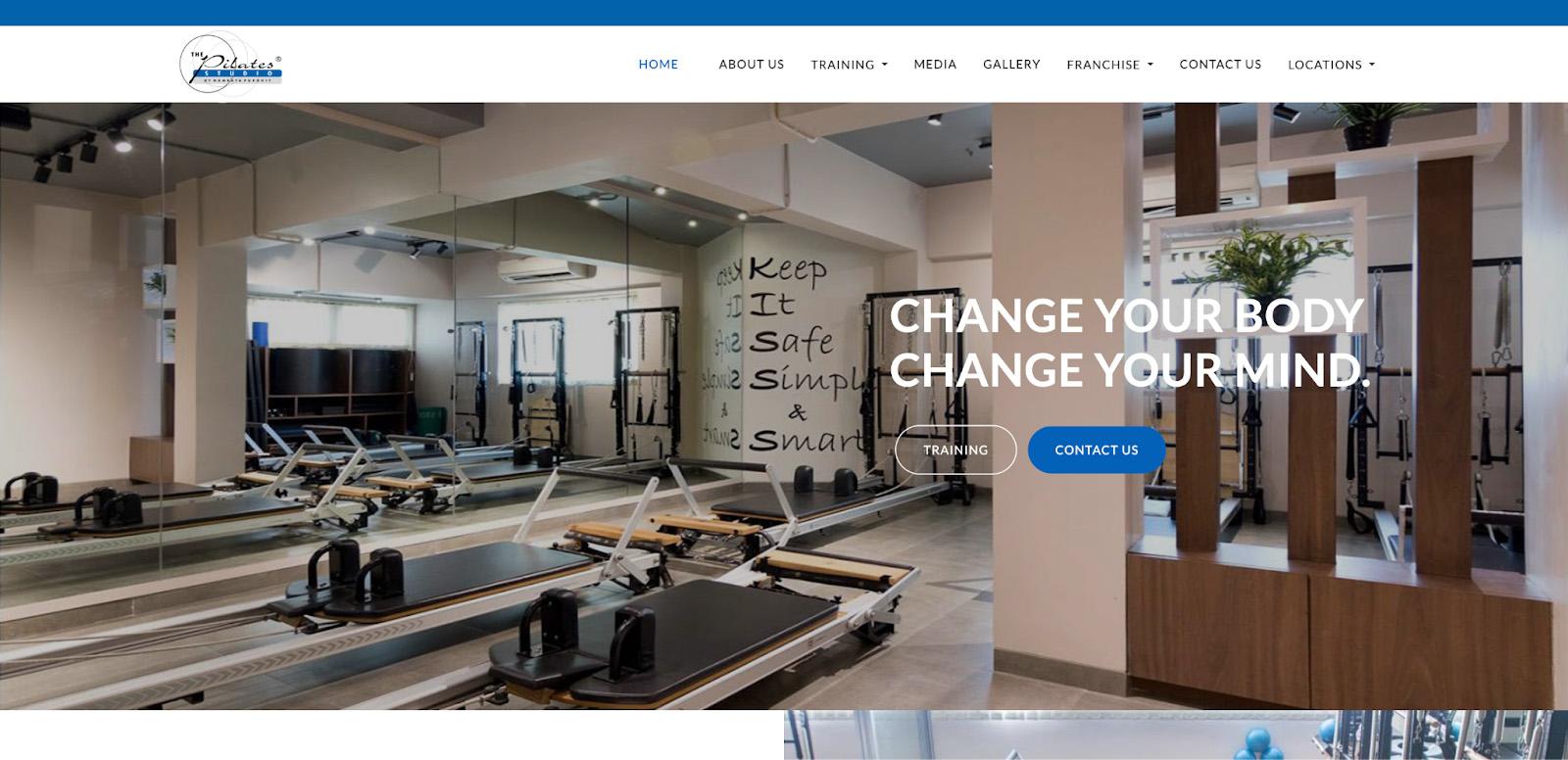
Keep in mind that if you're designing a portfolio or a one-page website, a landing page requires special care and attention. Put your best foot forward by including a headshot and a brief biography of your experience and accomplishments to build trust and trustworthiness.
It takes more than a flashy design to make it to the top fitness website lists. Social proof, such as accolades, star ratings, or testimonials from satisfied customers, is a great tool for proving credibility. It is a must to include these evaluations within your landing page since 93% of customers agree to read internet reviews before making a decision.
Do not forget to update your contact information at the bottom of your page with your current phone number, active email address, and further business details.
Services
If you offer a sauna in your gym, say it. If you have a free coffee machine at your yoga center, highlight that too. It might sound basic or irrational, but this is how you build a service page. There shouldn’t be any detail left unsaid.
It is expected that any reputable fitness center would provide a range of services and having a website allows you to display all of your services and attract potential customers. This page can include subpages as its purpose is to provide a clear elucidation of the services with accompanying images, rather than only listing them.
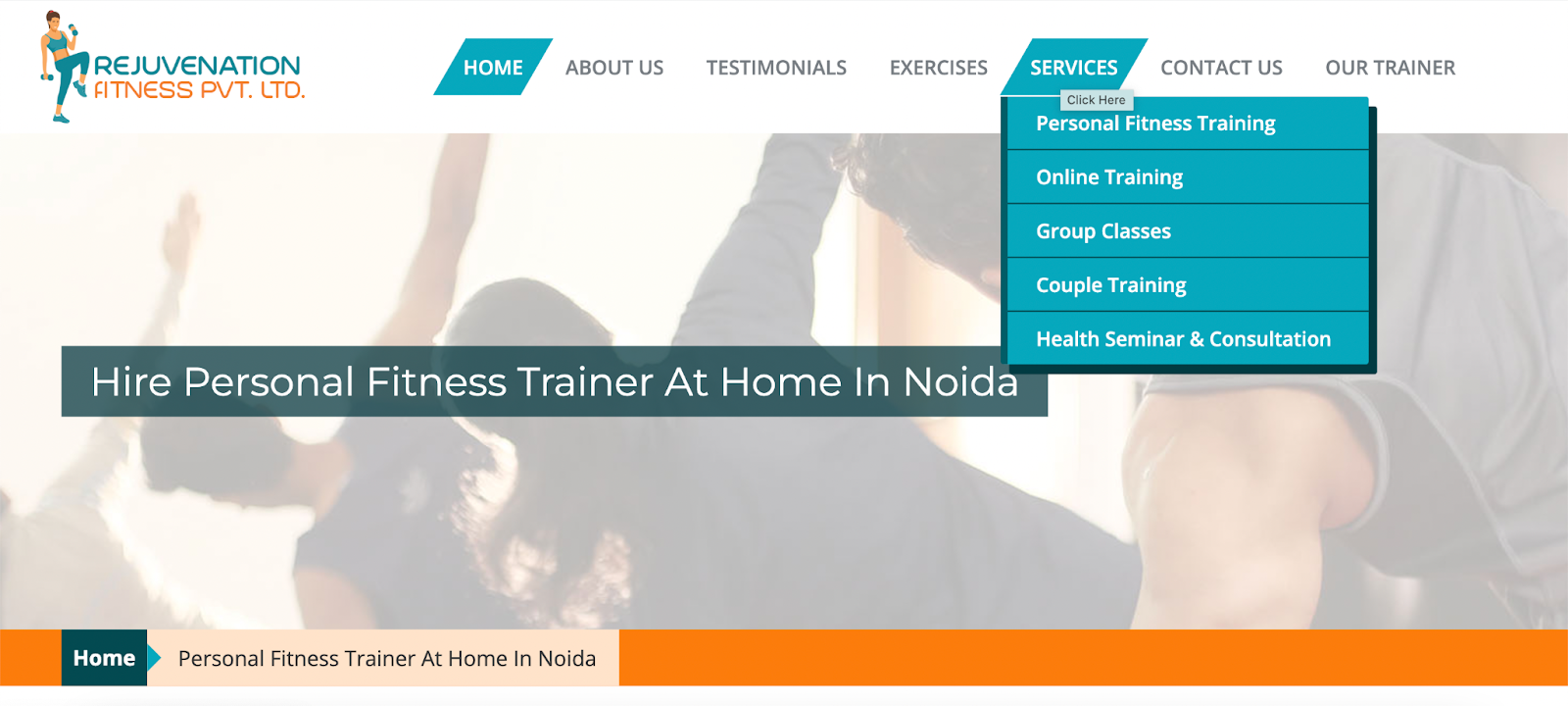
Contact Page
Contact pages is an integral part of any website as it allow users to easily reach out for questions and service requests. To get in touch with you, a prospective customer may use a contact form instead of calling or emailing.
Next up, Google Maps integration is a must! Websites that include Google Maps or another one of its primary products are promoted by Google. Secondly, people who visit your location page are probably looking for your exact address. This will allow them to determine whether your outlet is near a known landmark or their residence.
You should check that the integrated map displays enough information to pinpoint your location and that the default zoom level enables users to easily recognize nearby landmarks and intersections.
Appointment Page
An essential feature for any fitness website is an appointment booking system that allows users to easily schedule and manage online appointments. The system allows you to see scheduled appointments, change them if needed, and even contact with clients.
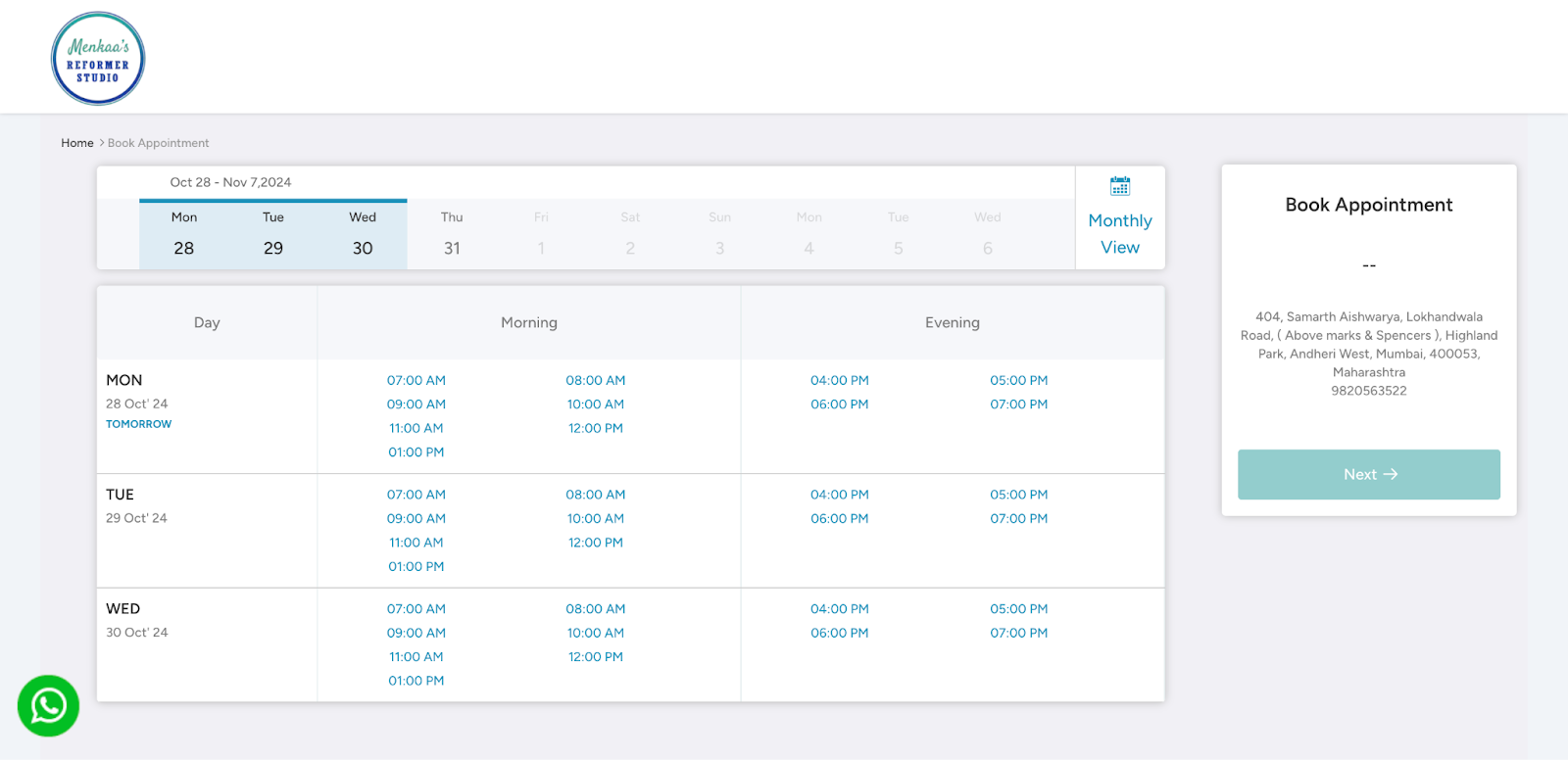
Fitness Blog
How can you think of promoting your website without including a blog? Create a free blog to share your thoughts with the world and attract visitors.
Adding fresh content to your website on a regular basis can boost its visibility in search engines and attract more visitors. For your fitness blog, you can also host guest posts from influential people in the field. Posting the journals of well-known nutritionists and health experts on a regular basis can do wonders for your business.
You can also dive into the fitness podcast craze by adding free podcasts on nutrition and fitness to your website. According to a research, India has 57.6 million monthly listeners, making it the world's third-largest podcast market, after the United States and China. Take advantage of this expanding demographic to raise awareness of your business and reach out to people who are interested in health and wellness and are looking for advice.
Step 7: Optimize Your Website for SEO
Search engine optimization (SEO) is an ongoing process. Using powerful SEO tactics can elevate your website to new heights.
First things first: make sure your fitness website is built, optimized, and functioning effectively. This will set you up for a successful website in the long term. A well-rounded SEO strategy also takes into account off-site advertising, link development, and social media marketing.
Here are the two most common SEO practices:
On-page SEO: On-page SEO is the method you may use on your website itself (front end) to improve search engine optimization and make your page more comprehensible to website crawlers.
Off-page SEO: Off-page SEO is about the things you can do outside of your site to improve your SEO, such as getting more high-quality backlinks.
You can also use GoDaddy's free SEO tools to improve your site's visibility in search engines and attract more customers before you release your website to the public.
Step 8: Launch Your Website
After you're satisfied with how your basic pages look, hit the publish button without more ado. After you're done with everything, just launch the website and keep the updating work simultaneously.
To grab some new clients, the next thing is to get the word out about your fitness website. Some strategies to make your website chatter are to connect it to your social media accounts, create targeted ads, and use other techniques.
After you have built your website and done sufficient advertising on social media, it's time to shake hands with fitness aggregators. For fitness centers, aggregators play the role of an online broker. They make it easy for people to choose the ideal gym or program in terms of price, time, and location.
Clients may get comprehensive information on fitness facilities and gyms, as well as their programs, thanks to these aggregators, which compile relevant data from around the Internet.
Start creating your fitness website today!
Building a fitness website doesn't have to be complicated. A website builder like GoDaddy and its pre-designed templates can simplify the process, allowing you to create a professional, SEO-optimized website for your fitness business. A website is not just a digital presence; it's a powerful marketing tool that can help you attract clients, showcase your work, and establish your brand in the fitness market.
